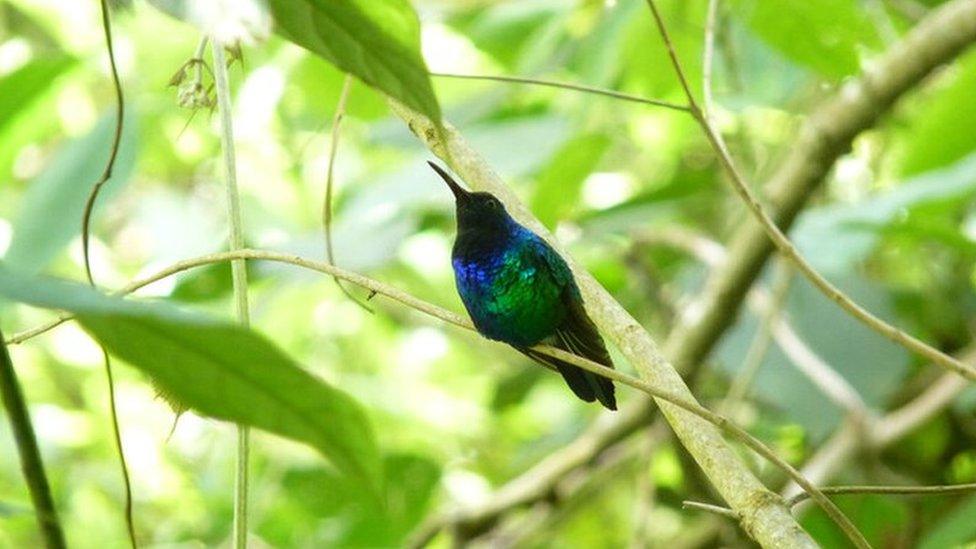Rare hummingbird thought to be extinct rediscovered in Colombia
- Published
- comments

The Santa Marta sabrewing is so rare that scientists thought the bird was extinct
A rare hummingbird that hasn't been seen for more than ten years has been rediscovered by a birdwatcher in the South American country of Colombia.
The Santa Marta sabrewing was last seen in 2010 and scientists feared the bird might be extinct as much of the the tropical forests where it lives had been destroyed to make way for farming.
The large hummingbird is only found in Colombia's Sierra Nevada de Santa Marta mountains in the north of the country.
It's just the third time the species has ever been spotted since it was was first discovered 76 years ago!
The bird was found in Colombia's Sierra Nevada de Santa Marta mountains
The discovery was made by birdwatcher Yurgen Vega who was working in the mountains with conservation charities SELVA, ProCAT and World Parrot Trust.
He called the sighting of the bird "a complete surprise, but a very welcome one."
Yurgen said: "As I was leaving the area where I had been working, a hummingbird caught my attention.
"I got out my binoculars and was shocked to see that it was a Santa Marta sabrewing, and in an incredible stroke of luck the hummingbird perched on a branch giving me time to take photos and video," he added.
The male hummingbird was easy to recognise thanks to its emerald green feathers, bright blue throat and curved black bill.
Hummingbirds are the only birds that can fly backwards for any length of time!
The Sierra Nevada de Santa Marta is home to many types of wildlife, including 24 different species of bird that cannot be found anywhere else in the world.
However, scientists estimate that only 15% of the forest is still intact.
Experts believe that the population of Santa Marta sabrewings in the Sierra Nevada de Santa Marta mountains is very small and is decreasing.
Despite the promising sighting, the species is listed as critically endangered on the IUCN Red List of Threatened Species.
